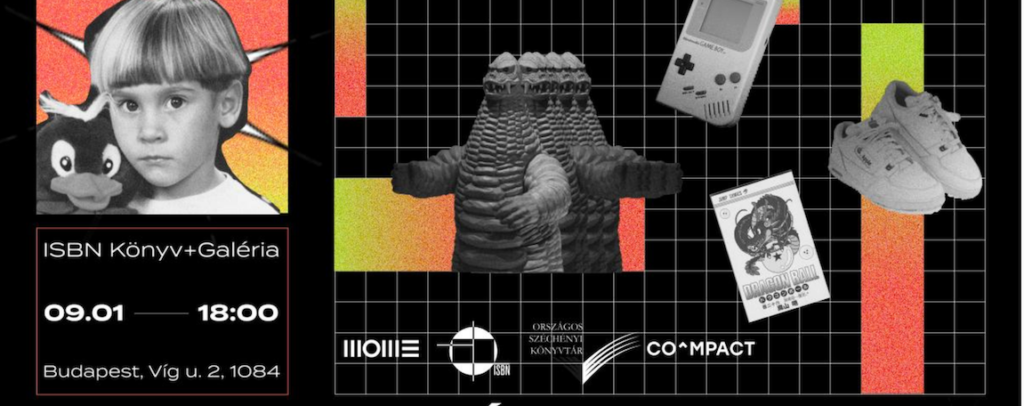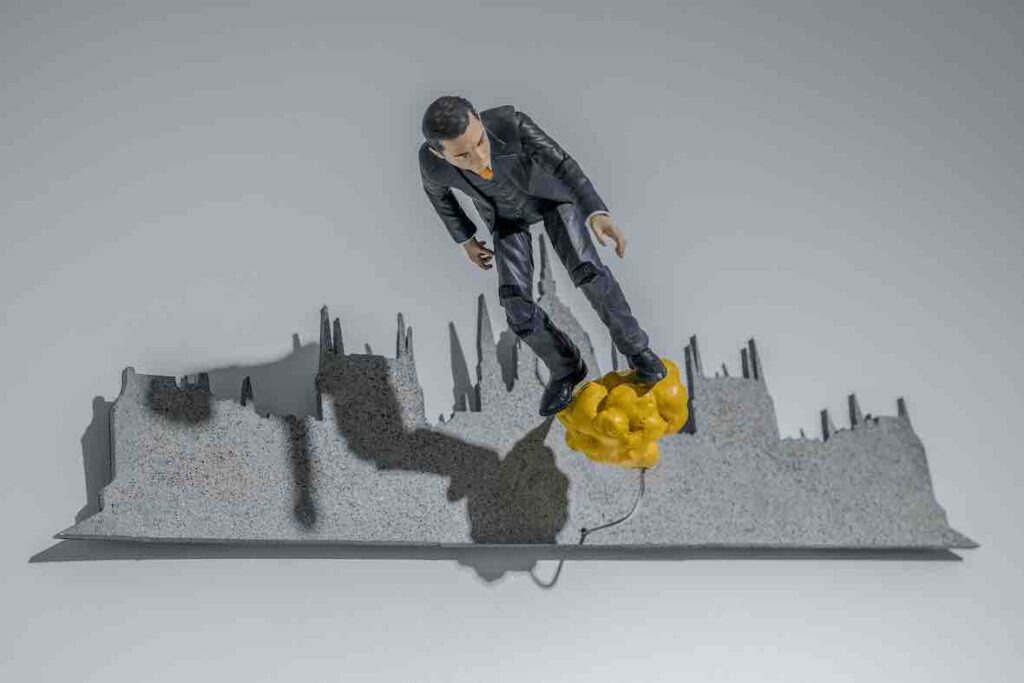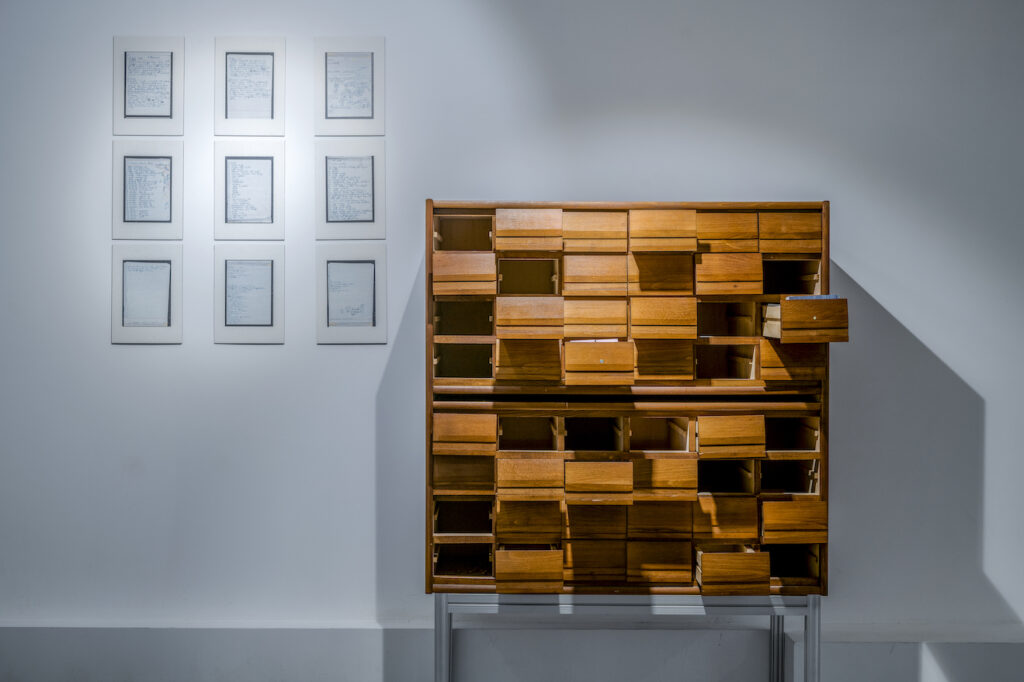
This blog is a thought experiment for the exhibition titled A Whale of a Bad Time. Curator: Zsófia Kókai and Exhibiting artists: Ivor Almásy, István Felsmann, Sára Gink-Miszlivetz, Katalin Kortmann-Járay, Karina Mendreczky, Balázs Máté Tóth, Márton Emil Tóth.
I visited this exhibition in September 2020 with an interest to explore connections with our Reconnect / Recollect project.
The exhibition portrays the 90s generations’ childhood memories. While remembering childhood, the past, present and future meet. In the process of remembering, images of childhood also get entangled and paint these memories without too much control or consciousness. Starting from Rousseau, images of childhood invoke children’s innocence, their uncorrupted nature away from adults’ concerns, such as politics and death. When news about József Antall Prime Minister’s death was televised on the 12th of December 1993, it interrupted the Whale of a Time (Gonosz Balna) episode of Donald Duck enthusing a whole generation of 90s children, it seemed politics suddenly entered children’s lives. This moment is interpreted as a ‘vaku-moment’ (an image that stays with everyone in a generation, such as the falling of the Twin Towers in New York on September 11, 2001, or the murder of President Kennedy) that arguably ties together this generation. These vaku-moments might enter into children’s lives as impactful (first) political memories. The English expression ‘Whale of a Time’ refers to an intensively good life experience, which ironically could represent the hope of the 90s immediately following regime change that sought to bring about “Western consumerist abundance, the hopes that democracy would bring historical justice and restitution, or the utopian impulse of the state socialist project itself” (Nadkarni, 2020, p. 8). However, as the exhibition title implies in Hungarian, these times and hopes for a better future shortly after turned into bitter realisations, and economic, social and political decline. The 90s has brought intensive transformations at all levels and in all aspects of society. Growing unemployment and the break up of social safety nets created, for example, homelessness, not present in socialist modernity before.
Did this Vaku-moment bring politics into the everyday life of the 90s generation’s? Political regimes often use notions of childhood and children to portray, support or realise their political agenda. During the socialist period, children represented the next generation that was expected to create a bright socialist future. Images of childhood served as icons of the socialist revolution. Children in neoliberal capitalist societies are understood as a future workforce and investment in their education seeks to bring about an economically stable future. Children and childhood are not only used by politics but children also take part in politics when they reinterpret and act in line with adult’s politics. Pioneers of socialism, or environmental activists and child soldiers today are prime examples of these types of not always willful political participation. So, do children meet politics when it unexpectedly enters into their lives through the media or their lives are intimately entwined in different forms of politics from their conception (think of legislations around abortion)? How the intensive changes of the 90s shaped children’s everyday life and how they interpret and engage in politics on their own terms, is a question this exhibition engages with. An impressive example of children’s everyday politics is Balázs Máté Tóth’s artwork about his school visit to the Parliament. He represents how children’s demand for a better life is understood in their own circumstances (the screening of a TV show) meets adults’ politics and finds closed ears. The release of pressure caused by this disappointment is created by the movable figure of PM Orbán.

The 90s also brought with it the possibility of quickly burying the socialist past. The utopian visions of socialist futures, however, still live with us. These past aspirations provide a ‘utopian surplus’ for a disillusioned present (Craps et al., 2018; p. 503), a theme through which critique runs in many of the artworks. The critique of consumer society, capitalism and mass (social) media prevalent in utopian futures of a postsocialist society provide the frame for many artworks in the exhibition. Márton Tóth’s work represents the ghostly emptiness of neon lights and self-serving pleasures of Balaton summers, Ivor Almássy and István Fellman critique technology that enabled media abundance and at the same time colonized our minds to suspend reality. Karina Mendreczky connects directly past futures, resting and dreaming together in the Balaton garden, with a concrete (in both meanings) present that stopped moving into any direction. Sára Gink-Miszlivetz archives her childhood memories together with her past futures in an old library card-catalogue only opening glimpses for the visitors to futures that perhaps never came. Searching for a new future is the most prominent in Katalin Kortman-Járay’s fortune teller artwork. She merges time, past-present-future into a seamless whole where the limit of a child’s dreaming is only but the starry sky. She is raising the question: how are futures written in our past and link to our present realities? – bringing to view the ways in which remembering works.

Viewed from today, past futures created in early post-socialist life are unsustainable. Capitalism, consumerism and technology led us to an environmental catastrophe where the exploited earth will no longer be able to sustain life for all. Lego bricks in the ocean could take 1300 years to break down and micro-plastics kill not only animals but also enter into human bodies. Unnoticed, they creep into our blood, lymph nodes and livers, which ultimately lead to fatalities. How could we create futures that sustain life – human and more-than-human? In modernity, each generation created futures towards which they were directed in their efforts. As generations exchanged each other, futures of the earlier generations were buried (Tim Ingold, 2020). The disaster of the Second World War had to be cleaned up by the next generation, which then set this generation on its path of capitalist/socialist modernity, yet again to be buried by the next generation of the 90s. Each of these futures, including the current one, seeks to bring forward modernity’s progress of uninterrupted growth which ultimately brings with it the exploitation of the life-sustaining capacity of the Earth. During the 1990s, it also became apparent that the millennial generation will be the first one during modernity whose future will be worse than the generation before. The idea and marching of modern progress at this point seemed to be disrupted. Still, within our anxieties for the future, our certitudes of a modernist progress narrative continue. To counterpose some of the existential anxieties accompanying the growing uncertainties, people nostalgically remember their pasts, especially their childhood, a life-period untouched by adult concerns which for many promised utopian futures.

Yurchak (2005) explains in his book entitled ‘Everything was forever, until it was no more’ the paradox of late socialist societies where it was generally felt that things will just go on forever, while at the same time people held that the disestablishment of the Soviet Union and the Socialist bloc was unsurprising, sort of expected. The current era, which many term as the Anthropocene, is characterised by human generated geological change. While there is a growing understanding of the unfolding climate catastrophe, many still believe that things will just go on forever. The ambivalence of the late socialist paradox strikes a chord with these feelings today. However, the Anthropocene “demands new ways of thinking about time that make strange our understanding of pasts, presents, and futures” unfolding in what Walter Benjamin (1999) terms as ‘homogeneous, empty time’ (Craps et al, 2018; p. 502.). Memories of childhood and remembering childhood can help us complicate time, to rapture narratives of historical progress and to disrupt the present by reminding us of their unrealisable futures and highlight memory practices as tools for future-making (Shaw, 2013). How can generations together imagine sustainable futures today? – might be a question that can guide further work of the artists in the Whale of a Bad Time exhibition, and especially in times when whales themselves are becoming extinct.

